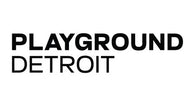In a small Columbia University speech hall, NY-based Toni L. Griffin, Director of Techinical Planning Team Urban Planning and Design for the American City, spoke to an almost full room about how she had been asked to come to Detroit to help figure out what to do the overwhelming amount of land not being utilized in the city among many other urban problems. What this urban planner did instead, was lead a large team of professional ‘civic leaders’ to study not just the land use, but also building assets, city systems, neighborhoods, and economic growth. Over the course of three years they compiled the Detroit Future City plan. An elaborate PowerPoint presentation streamlined Griffin’s in-depth and prolific description of the innovative and revitalizing urban plan. From an introduction of this the Detroit Strategic Framework document,
“The Long-Term Planning initiative was led by a Mayor-appointed Steering Committee of 12 civic leaders representing business, philanthropy, community, faith-based institutions, and government. The Detroit Economic Growth Corporation (DEGC) managed the initiative, overseeing the work of the Planning Team of local, national, and international consultants representing the disciplines of urban planning and design, economics, engineering, landscape architecture, and real estate development. A Civic Engagement Team was also created to interact with many community groups, business leaders, and residents. The local partners led the Civic Engagement process along with a host of community and advocacy organizations as well as Process Leaders who aided in gaining citywide input into the initiative as the Framework took shape. The work of this diverse collaboration has created a process and a guide for decision making for Detroit’s future—The Detroit Strategic Framework—with innovative strategies to move toward a more efficient and sustainable city and improve the quality of life and business in Detroit.”
Griffin explained that ‘transformation’ was the key word for her in thinking about the city and what the plan needed to focus on to figure out how to make that happen. First, they looked at various ‘tough’ realities of the city currently: financial, structural, and economical hardships. Acknowledging the current city situation was crucial to figuring out realistic projections of the next five, ten, 20 years would look like. They worked with the community to speak to people about their concerns, short-term and long. The plan outlines projected different “Implementation Horizons for Change broken down into different time frames:”
DOWNLOAD THE ENTIRE PLAN [PDF]
From a recent Detroit Hub article on the funding initiative behind the plan,
Headlines across Detroit talked about the $150 million the Kresge Foundation is committing to the Detroit Future City Project, which is the result of two years of work through the Detroit Works process….“Every dollar spent in Detroit” will be aligned with Detroit Future City, says Rip Rapson, CEO of the Kresge Foundation. This is in concert with $3 million from the Kresge and W.K. Kellogg Foundations to fund the implementation office. There are 12 “Imperative Actions” of the plan … the things the framework views as important. These actions are then reinforced by 24 “transformative ideas,” each section of which will merit deeper inspection. –Detroit Future City vision for Detroit in 2030 is stabilized, sustainable, green and on the go, Detroit Hub, Jan 2013.
Watch Toni L. Griffin speak about the Detroit Future City plan below at a recent meeting in Detroit if you weren’t able to watch her speak at Columbia.
The post DETROIT FUTURE CITY URBAN PLANNER TONI L. GRIFFIN SPEAKS AT COLUMBIA UNIVERSITY appeared first on PLAYGROUND DETROIT.



